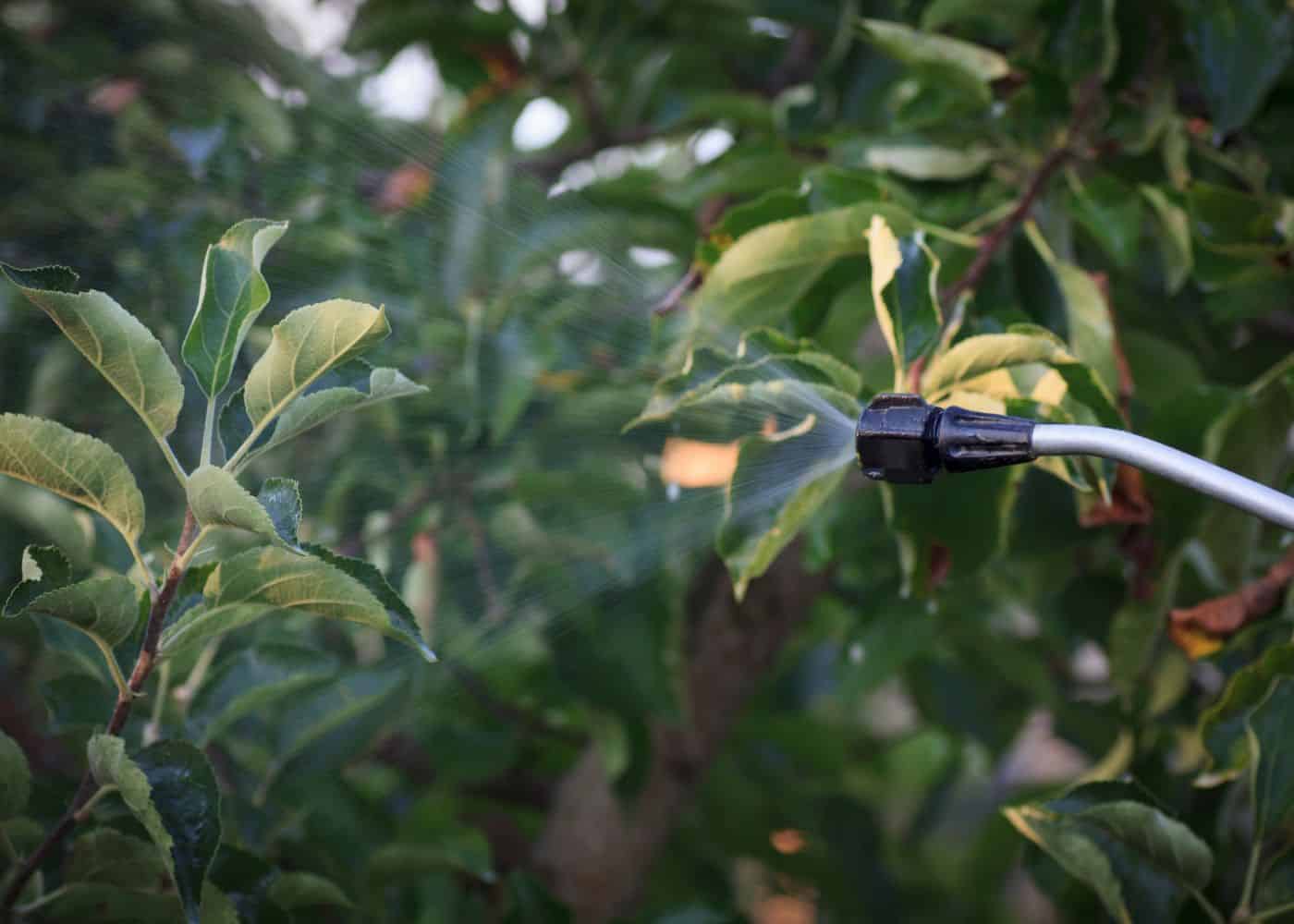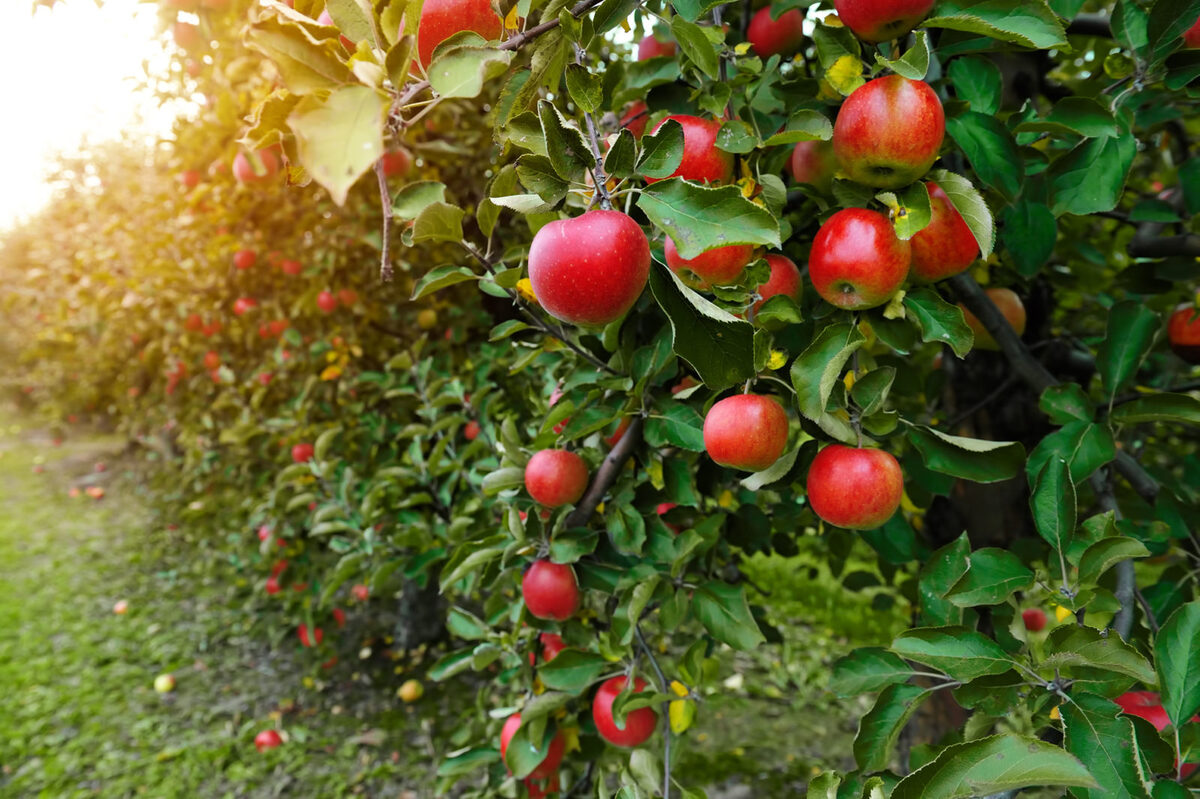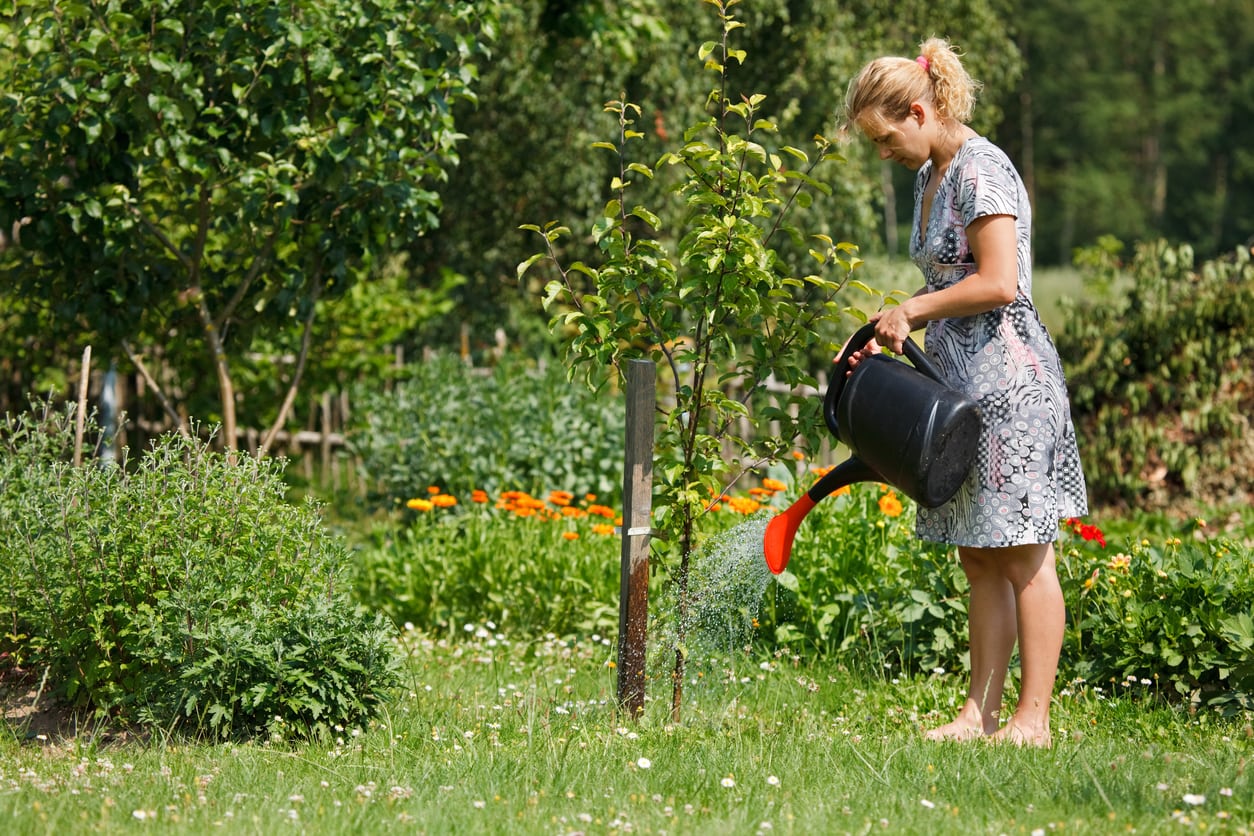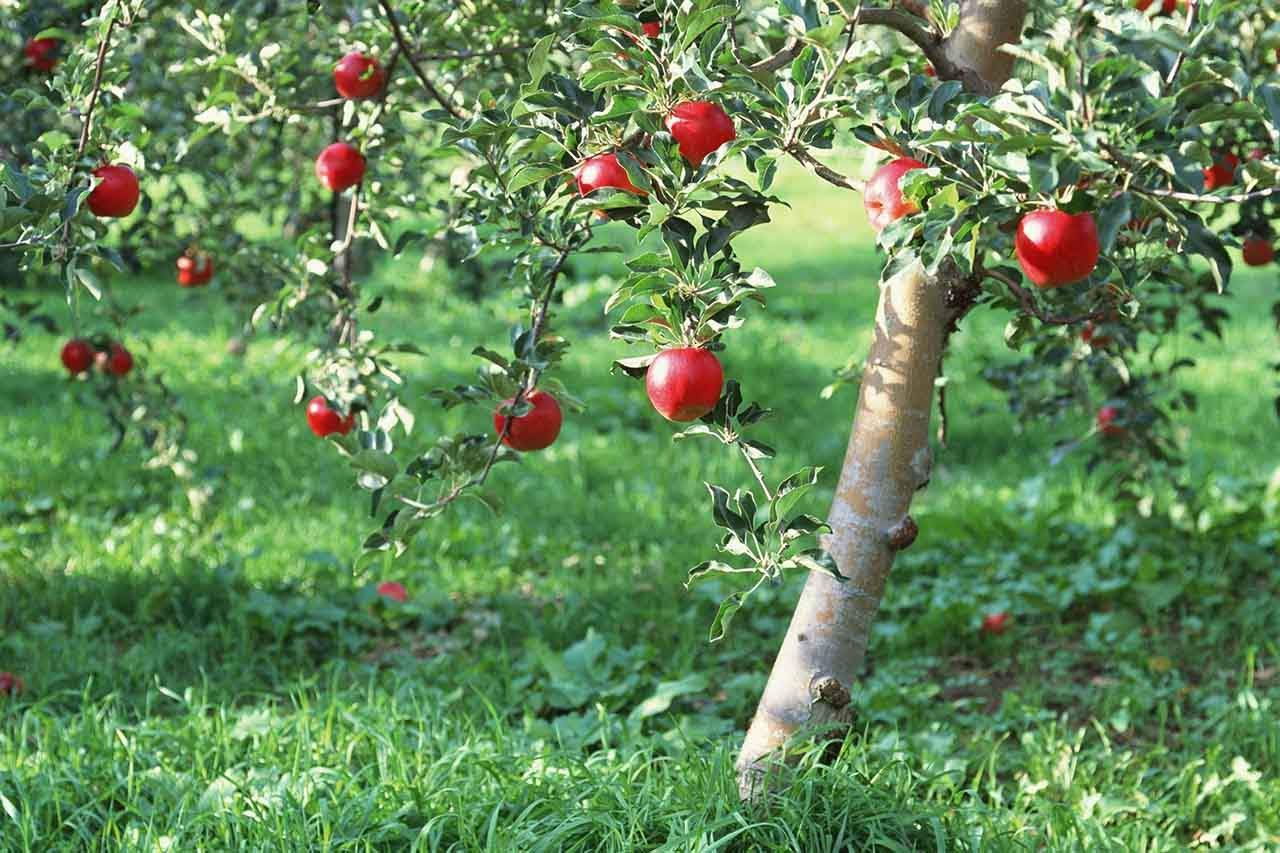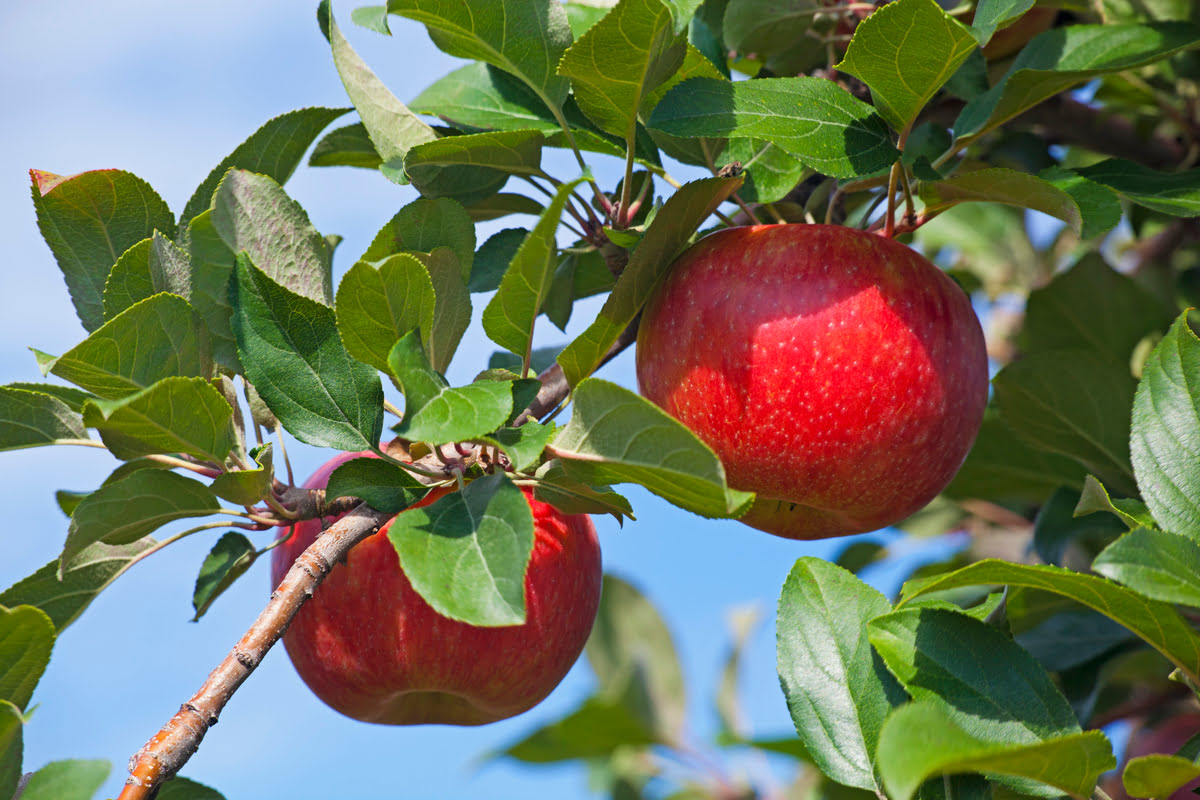Home>Types of Gardening>Edible Gardening>How Far Should Apple Trees Be Planted Apart
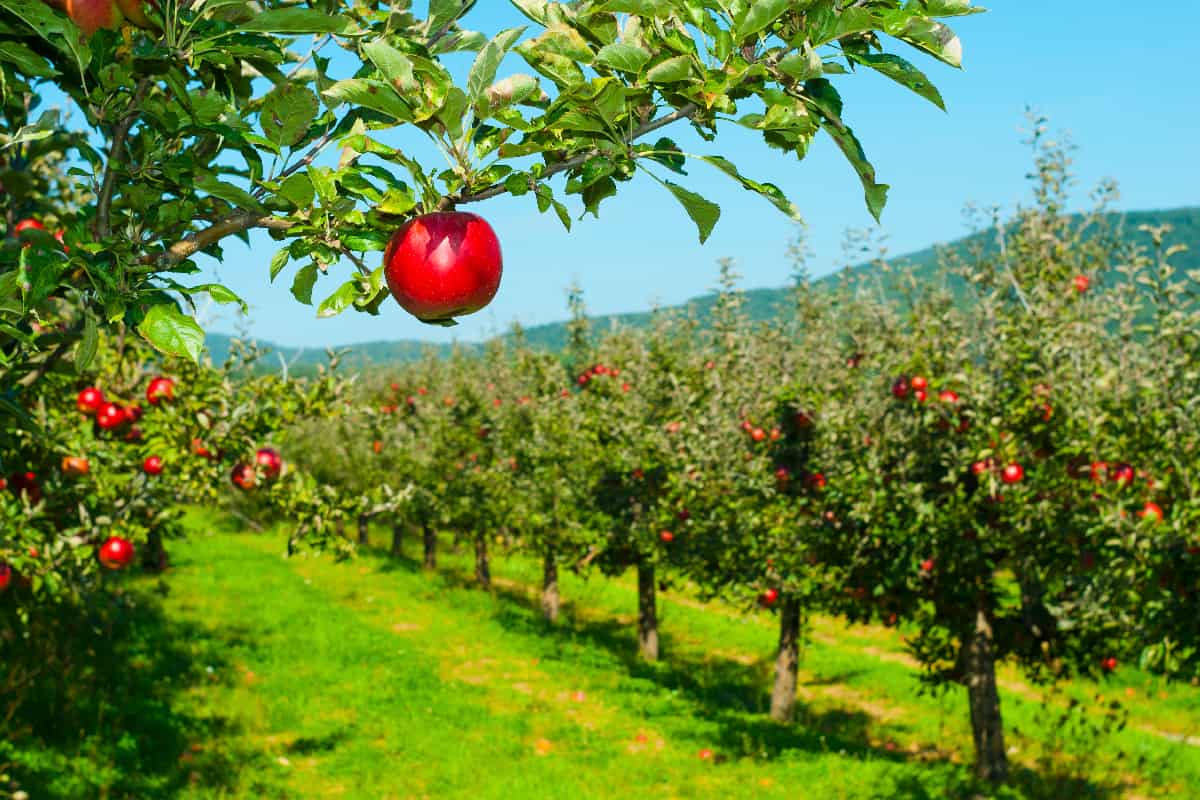

Edible Gardening
How Far Should Apple Trees Be Planted Apart
Published: November 7, 2023
Discover the ideal spacing for planting apple trees in your edible garden. Learn how far apart apple trees should be planted for optimal growth and fruit production.
(Many of the links in this article redirect to a specific reviewed product. Your purchase of these products through affiliate links helps to generate commission for Chicagolandgardening.com, at no extra cost. Learn more)
Table of Contents
Introduction
Welcome to the world of edible gardening, where you can turn your backyard into a bountiful oasis of fresh and delicious produce. One of the most popular choices for edible gardening is growing apple trees. Not only do they offer a beautiful addition to your landscape, but they also provide an abundant harvest of crisp and juicy fruits that can be enjoyed in a variety of ways.
However, when it comes to planting apple trees, there are certain factors to consider to ensure their optimal growth and productivity. One of these factors is the spacing between the trees. Proper spacing plays a crucial role in allowing the apple trees to receive adequate sunlight, nutrients, and airflow, which are essential for their overall health and development.
In this article, we will explore the recommended spacing for apple trees and the benefits of planting them at the proper distance. We will also touch on the potential drawbacks of improper spacing and provide some helpful tips for ensuring your apple trees are planted at the correct distance. So, whether you are a seasoned gardener or just starting out, let’s delve into the world of apple tree spacing and discover how to create thriving and fruitful edible gardens.
Factors to Consider When Planting Apple Trees
Before diving into the specifics of apple tree spacing, it is important to understand the various factors that should be taken into consideration when planting these trees. By assessing these factors, you can ensure that your apple trees have the best chance of thriving and producing a bountiful harvest:
- Climate: Different apple tree varieties have specific climate requirements to thrive. Consider the average temperatures, rainfall, and frost dates in your region to choose apple tree varieties that are suitable for your climate.
- Soil Type: Apple trees prefer well-drained soil with a pH level between 6.0 and 7.0. Conduct a soil test to determine the pH level and make any necessary amendments to create optimal soil conditions.
- Sunlight: Apple trees require at least 6-8 hours of direct sunlight per day to produce healthy foliage and fruits. Choose a planting location that receives ample sunlight throughout the day.
- Pollination: Most apple tree varieties are not self-pollinating, meaning they require cross-pollination from another compatible apple tree variety to produce fruits. Consider the pollination requirements and plant at least two compatible varieties in proximity to ensure proper pollination.
- Watering: Adequate water supply is essential for the establishment and growth of apple trees. Consider the availability of a water source and the irrigation needs of the variety you choose.
- Disease and Pest Resistance: Different apple tree varieties exhibit varying levels of resistance to diseases and pests. Research and select varieties that are known to be resistant to common apple tree pests and diseases prevalent in your area.
By assessing these factors, you can select the most suitable apple tree variety and ensure that your planting site meets the necessary conditions for their successful growth. Taking these factors into account will set the foundation for proper apple tree spacing and ultimately lead to healthy and productive trees.
Recommended Spacing for Apple Trees
Proper spacing is essential for the healthy development of apple trees. It allows each tree to receive adequate sunlight, nutrients, and airflow, minimizing the risk of disease and ensuring optimal fruit production. The recommended spacing for apple trees can vary depending on several factors, including the tree’s rootstock and its growth habit.
In general, the spacing between apple trees should be between 12 and 20 feet. Dwarf and semi-dwarf apple trees, which are commonly used in backyard gardens, can be planted closer together, with a spacing of 12 to 15 feet. Standard apple trees, which are larger in size, require more space and should be planted with a spacing of 18 to 20 feet.
It’s important to consider not only the spacing between individual trees but also the spacing between rows. Allow a distance of at least 12 to 15 feet between rows to ensure ample room for tree growth, maintenance, and harvesting.
When determining the spacing for your apple trees, take into account their mature size as well. Consider the estimated width of the trees at maturity and provide enough space in between to prevent overcrowding and allow easy access for pruning, pest management, and harvesting. Remember to consider the spread of branches and the need for airflow to promote healthy foliage and minimize the risk of fungal diseases.
In addition to the spacing between trees, it’s also crucial to consider the distance from other structures, such as buildings or fences. Keep in mind that apple trees can grow quite large and may interfere with nearby structures if not given enough space. Aim to maintain a distance of at least 10 to 15 feet from buildings and other permanent structures to allow sufficient growth and prevent potential damage.
By adhering to the recommended spacing guidelines for apple trees, you will promote healthy growth, ensure proper airflow, and simplify maintenance tasks. Additionally, adequate spacing will allow your apple trees to reach their full potential, providing you with a plentiful harvest of delicious fruits.
Benefits of Planting Apple Trees at the Proper Distance
Planting apple trees at the recommended distance offers a myriad of benefits that contribute to their overall health and productivity. Here are some key advantages of maintaining proper spacing between apple trees:
- Sunlight Capture: Proper spacing ensures that each apple tree has access to ample sunlight. Sunlight is essential for photosynthesis, the process by which plants convert sunlight into energy. Sufficient sunlight enables the tree to produce robust foliage, which is crucial for photosynthesis and the development of high-quality fruits.
- Adequate Airflow: Appropriate spacing allows for proper airflow between the apple trees. Good air circulation helps to prevent the accumulation of moisture on foliage and fruits, minimizing the risk of fungal diseases. It also aids in the pollination process, allowing pollen to disperse more effectively among the flowers.
- Nutrient Availability: With enough space, apple tree roots can spread and access a larger area of the soil, ensuring better nutrient uptake. This promotes healthy growth and helps the trees develop strong root systems, enhancing their ability to withstand adverse conditions and improve overall plant vigor.
- Maintenance and Harvesting: Sufficient spacing between trees makes it easier to perform essential maintenance tasks, such as pruning, fertilizing, and spraying for pests or diseases. It also provides room for maneuvering equipment during the harvesting season, making it more convenient to gather the abundant bounty of apples.
- Disease Prevention: Properly spaced apple trees are less susceptible to diseases as they benefit from improved airflow and reduced humidity levels. This can help prevent the spread of diseases such as apple scab, powdery mildew, or fire blight, which can be detrimental to tree health and fruit quality.
By adhering to the recommended spacing guidelines, you can optimize the growth and wellbeing of your apple trees, resulting in healthier trees with improved resistance to diseases and pests. Moreover, proper spacing facilitates maintenance tasks and enhances the overall efficiency of managing your apple orchard.
In the next section, we will explore the potential drawbacks of planting apple trees too close together and provide some tips on how to ensure your trees are properly spaced for maximum benefits.
Potential Drawbacks of Improper Apple Tree Spacing
Improper spacing between apple trees can lead to a range of issues that can negatively impact their growth and overall health. Here are some potential drawbacks of planting apple trees too close together:
- Competition for Resources: When apple trees are planted too closely, they compete for essential resources such as sunlight, water, and nutrients. This can result in stunted growth, reduced fruit production, and overall diminished tree vitality.
- Poor Air Circulation: Insufficient spacing restricts airflow between the trees. This creates a conducive environment for increased humidity and stagnant air, which can promote the development of fungal diseases such as apple scab and powdery mildew. Lack of air circulation can also impede the pollination process, affecting fruit set and yield.
- Increased Pest Pressure: Crowded apple trees provide an ideal habitat for pests and insects. Reduced airflow and increased humidity make the trees more susceptible to pest infestations, including aphids, mites, and codling moths. Pests can easily move from tree to tree, leading to widespread damage throughout the orchard.
- Difficulty in Maintenance: Improper spacing makes it challenging to perform routine maintenance tasks, such as pruning and thinning. Limited space inhibits proper access to individual trees, hindering the removal of weak or diseased branches and affecting the overall structure of the tree. It can also make it harder to apply fertilizers or pest control measures evenly.
- Inadequate Tree Support: Planting trees too closely together can result in overcrowded canopies, with branches intertwining and competing for space. This can lead to weak branch development and structural instability, increasing the risk of branch breakage, especially during strong winds or heavy fruit loads.
It is important to note that these drawbacks can sometimes take time to manifest. In the early years, apple trees planted too closely might appear fine, but as they mature and grow, these issues become more apparent and can have a long-term negative effect on tree health and fruit production.
Proper spacing is crucial to minimize these potential drawbacks. By allowing adequate space between apple trees, you can create an environment that promotes healthy growth, enhances disease resistance, and simplifies the management and maintenance of your orchard.
Next, we will explore some tips on how to ensure your apple trees are planted at the correct distance for optimal results.
Tips for Planting Apple Trees at the Correct Distance
Planting apple trees at the correct distance is crucial for their successful growth and productivity. Here are some tips to ensure your apple trees are properly spaced:
- Research Apple Tree Varieties: Different apple tree varieties have varying growth habits and sizes. Before planting, research the mature size of the chosen varieties to determine the appropriate spacing required.
- Measure the Spacing: Use a measuring tape or any other tool to mark the exact distance for each tree. Avoid estimating or eyeballing the spacing, as this may lead to inaccuracies.
- Consider Rootstock: The choice of rootstock can influence the size of the apple tree. Dwarf and semi-dwarf rootstocks generally have smaller mature sizes than standard rootstocks. Selecting the appropriate rootstock can help optimize spacing requirements.
- Allow Room for Growth: Take into account the potential growth of the tree’s crown and branches. Allow enough space between trees to accommodate the lateral spread of the branches, ensuring proper sunlight penetration and airflow.
- Mark Planting Locations: Before planting, mark the exact planting spots with stakes or flags to ensure accurate spacing. This will help avoid confusion during the planting process.
- Favorable Microclimate: When determining spacing, consider the microclimate of your orchard. If the site tends to have higher humidity or limited airflow, providing extra space between trees can help mitigate these issues and reduce the risk of fungal diseases.
- Regular Pruning: Implement a regular pruning schedule to maintain the shape and structure of the apple trees. Pruning keeps the trees in check and prevents overcrowding, allowing for better airflow and reducing the risk of disease development.
- Monitor Growth: Regularly monitor the growth of your trees to ensure they are not outgrowing their allocated space. Adjustments may need to be made over time to maintain adequate spacing between trees as they develop.
By following these tips, you can ensure that your apple trees are planted at the correct distance, providing them with optimal growing conditions and maximizing their potential for healthy growth and abundant fruit production.
Remember, proper spacing is not a one-time task but an ongoing consideration. Regularly assess and maintain the spacing between your apple trees to keep them thriving and creating a fruitful and beautiful orchard.
Conclusion
Proper spacing is essential when it comes to planting apple trees in your garden or orchard. By considering factors such as climate, soil type, sunlight, pollination, watering, and disease resistance, you can make informed decisions about which apple tree varieties to plant and ensure that they have the best possible start.
The recommended spacing for apple trees is typically between 12 and 20 feet, depending on the tree’s size and growth habit. Adequate spacing allows each tree to receive sufficient sunlight, nutrients, and airflow, promoting healthy growth, disease resistance, and maximum fruit production.
While planting apple trees too closely together can lead to drawbacks such as competition for resources, poor air circulation, increased pest pressure, maintenance challenges, and inadequate tree support, following the proper spacing guidelines can help mitigate these issues.
By adhering to the recommended spacing and considering factors such as mature tree size, you can ensure that your apple trees have enough room to grow, flourish, and bear delicious fruits. Regular monitoring, maintenance, and pruning will further support the health and vitality of your apple trees.
Remember, planting apple trees is not just about the immediate satisfaction of enjoying homegrown apples, but also a long-term investment in creating a vibrant and productive orchard. With proper spacing and care, your apple trees will reward you with years of beauty and abundance.
So, embrace the joy of edible gardening and savor the delight of growing your very own apple trees. Happy planting!
